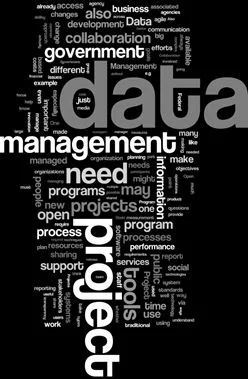You Need a Project Manager on Your Big Data Team
Tap or click here to download a .pdf of this article.

The firewalled article by Ian Thomas, The seven people you need on your Big Data team, is an entertaining and insightful overview of needed technical skills if you are tasked with developing a team that “… takes data from various sources … and turns it into valuable insights that can be shared broadly across the organization.” The article’s suggested team members, each nimbly described, include:
- The Handyman
- The Open Source Guru
- The Data Modeler
- The Deep Diver
- The Storyteller
- The Snoop
- The Privacy Wonk
Thankfully, the article also includes a “bonus” eighth member: “The Cat Herder (you!)”
I’m hoping this eighth person also has project management skills. By that I am not referring to someone with just a “PMP” behind his or her name but to someone who understands project-related management, communication, and collaboration, as well as the things that tend to make data intensive projects special.
Here are my own first three “action items” from the project manager’s perspective when faced with initiating a “big data” program. At minimum, doing these will impact whom you recruit.
Project Manager Action Item #1
The first thing I would do as a project manager would be to understand and gain agreement on “Why are we doing this?” Is the problem we’re trying to solve really to set up a generalized corporate resource as suggested in the article’s 2nd paragraph? Or are we trying to solve some more specific problems that the organization has already recognized and/or prioritized? The answer to this question will have a profound impact on how I recruit, what people start working on, resource requirements, and who needs to be “in the loop” with the team.
Project Manager Action Item #2
Next I would develop a schedule of defined deliverables along with a list of all the people needed to define deliverable requirements, to gain support for the work that needs to be done to generate them, and to evaluate their performance and acceptance. I’d make this schedule available — and I would make sure that everyone understands that it will probably need to change as the program evolves.
Project Manager Action Item #3
Third, I would make sure the data we’re managing is inventoried, its ownership and location defined, and its quality (including its metadata) assessed. Data extraction, quality, and standardization efforts may then have to be prioritized. How this prioritization is accomplished will be driven to a great extent by action item number one (and by the budget).
What’s Next?
For the most part the above suggestions come straight from Project Management 101. They are leavened with a bit of the reality that data specific projects do require some special handling.
What do you think? Are there other specific steps the project manager should take at the outset of such a project that will impact teambuilding? Let us know in the comments!
Related Reading
- 10 Basic Suggestions for Planning and Managing Data Intensive Projects
- DATA Act Implementation: Where’s the Plan?
- Don’t Let Tools Drive Enterprise Data Strategy
- Getting Real About “Open Data” Part II
- How Should DATA Act Implementation Impact Federal Project Management Practices?
- Problems and Opportunities with Big Data: a Project Management Perspective
- Recouping “Big Data” Investment in One Year Mandates Serious Project Management
- Risk Management, Open Data, and Government Shutdowns
- Ten Questions for People Who Manage Large Data Intensive Projects
Acknowledgement
- Thanks to my friend Doug Brockway for suggesting the kernel of this article.
Copyright (c) 2015 by Dennis D. McDonald, Ph.D. Dennis is an Alexandria Virginia based management consultant whose services include preproposal research and analysis, proposal development and costing, marketing and sales support, project and program management including PMO setup and administration, project workplan development, and resource planning. Contact him via email at ddmcd@yahoo.com.




